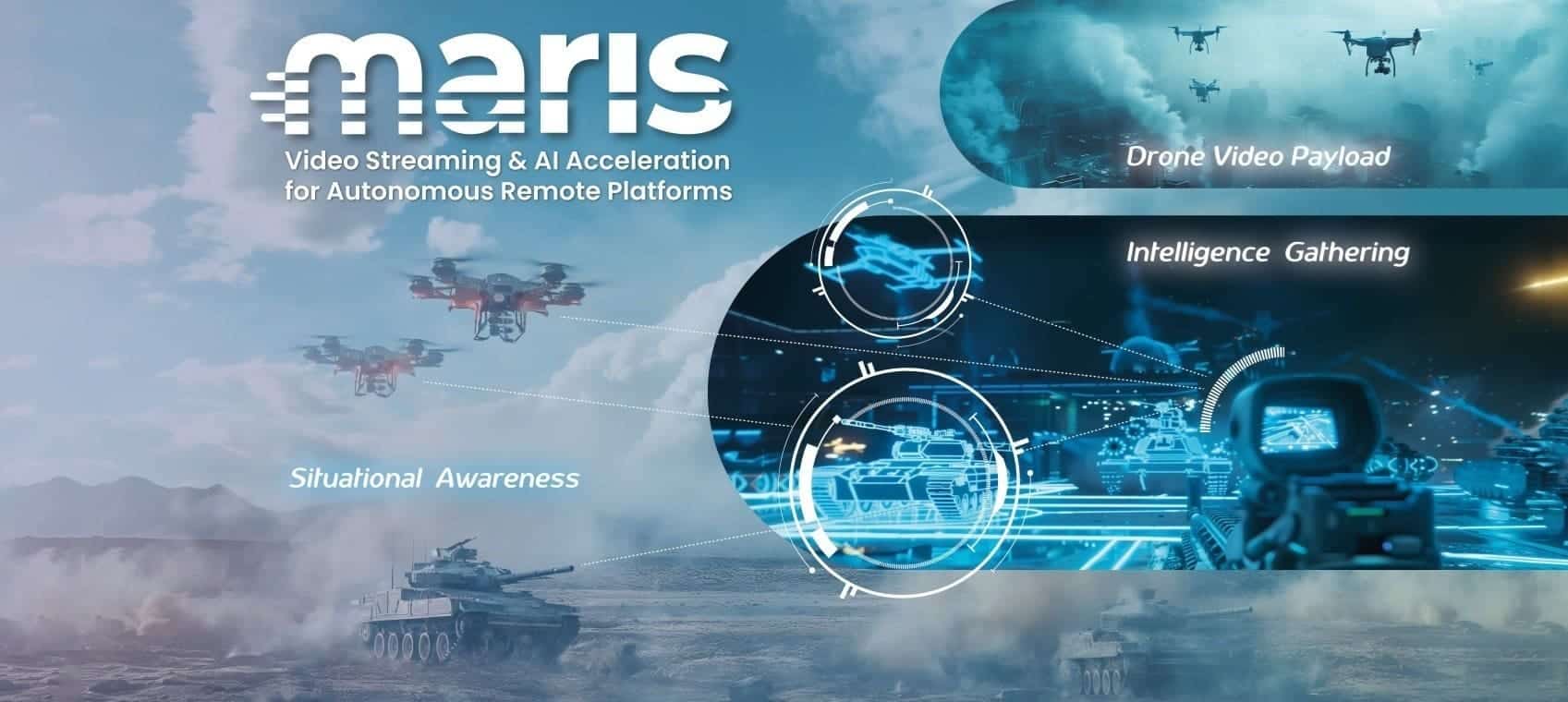Global defense spending has seen significant growth, but what trends are shaping this growth, and what solutions are leading the way?
The outlook for the defense industry trends in 2024 can easily be described as robust, strong, and dynamic. Future defense technology is reshaping the sector across multiple innovations and solutions, while geopolitical tensions and increased global defense spend are placing these next generation air defense innovations at center stage. The Situational Awareness Market 2024-2030 report paints a picture of a market at the edge of significant growth, driven by real-time monitoring, threat detection, risk mitigation, and proactive decision-making trends. Sensors, analytics, artificial intelligence (AI), automation, and visualization tools contribute much-needed capabilities to organizations focusing on situational awareness system (SAS) capabilities, safeguarding assets, protecting individuals, and securing operations.
SAS evolutions in technology and capability are putting insights and information at the fingertips of response teams and decision-makers in real-time, offering an immediacy in incident resolution and prevention that has not been possible before. The use of AI edge computing, edge video intelligence, intelligent video analytics solutions, and other advanced, customized solutions are bolstering the industry and its innovations. According to Yahoo Finance, the defense electronic market is estimated at US$178 billion, with a compound annual growth rate (CAGR) of 5.8% by 2034. It is expected to exceed US$311.5 billion by the same year.
Defense Industry Trends and Patterns Shaping the Future of SAS in 2024 and Beyond
Advanced sensor technologies and data analytics provide real-time insights for enhanced decision-making while integrating Internet of Things (IoT) devices and surveillance systems makes it easier for companies to monitor their environments comprehensively. Technology is allowing for the proactive detection of threats and anomalies in real-time, and these solutions can be customized to fit specific use cases.
In the government realm, these use cases involve citizen and information safety, ensuring that systems are agile enough to adapt to evolving security challenges. In the private sector, security capable of leveraging machine learning algorithms can transform cybersecurity and enable predictive analytics to forecast risk, optimize response strategies, and embed the flexibility needed to navigate unexpected threats and incidents.
The latter is a challenge, particularly in the current landscape. Geopolitical and economic instability are creating friction points that have organizations on alert. It is driving investments into advanced sensor technologies, data analytics platforms, and solutions capable of providing comprehensive situational awareness across various environments. A recent Markets and Markets report found that the global spend on defense was $US 1.7 trillion in 2022, increasing to 2.4% of the global gross domestic product (GDP) in 2023. Governments, driven by uncertainty and the need to bed down security, focus on their defense spending, with the US, China, Russia, India, and Saudi Arabia making up 63% of these figures.
The market is also powered by partnerships. Collaborative engagements across different organizations and agencies are creating opportunities for innovation. The technologies shaping up around demand are built on the latest developments and capabilities and are reimagining the potential of defense across multiple applications and locations.
Next-generation air defense technology is redefining defense and security
Defense technology is riding the wave of innovation and ingenuity, introducing solutions and systems designed to mitigate threats across multiple layers and touchpoints. These are some of the most exciting and relevant evolutions in the future of the defense industry in 2024:
01: Next-generation drones
The military drone market is anticipated to grow to $US 35.60 billion by 2030 from $US 14.14 billion in 2023. Unmanned Aerial Vehicles (UAVs) are gaining traction thanks to their agility and ubiquity. Next generation military drones are capable of handling surveying, combat operations, transportation, and mapping requirements, and are set to take another step forward in their innovation with the introduction of AI. Furthermore, next generation missile defense includes automated intelligence provided by generative AI (GenAI) means drones can identify and select targets with incredible precision.
According to a recent analysis in Fortune Business Insights, the future of defense specifically in the area of drone technology is experiencing increased adoption and potential due to the use of advanced sensors and increasingly robust carrying capacities. Many of the most advanced UAVs can carry equipment into remote areas and help with surveillance, reconnaissance, and combat strategies. These UAVs reduce the risk to the lives of defense personnel, aid in precision strikes, and are increasingly cost-effective.
Next generation drones equipped with advanced AI edge computing capabilities can autonomously navigate complex environments, avoiding obstacles and adapting mission plans based on real-time data. For instance, in a search and rescue mission, a drone can analyze the terrain, avoid obstacles, and adjust its flight path. AI algorithms enable drones to make rapid decisions, such as identifying threats and selecting flight paths autonomously, enhancing their effectiveness in military operations and surveillance tasks.
Drones also feature high-resolution imaging technology, allowing for detailed analysis of terrain and structures from significant altitudes, which is invaluable for urban surveillance and disaster response. Real-time data transmission capabilities enable drones to stream live video and sensor data to command centers, facilitating informed decision-making during time-sensitive operations. With advancements in battery and propulsion technologies, drones can stay airborne for extended periods, covering vast geographical areas and providing persistent surveillance for large-scale operations, such as disaster response and border security.
02: Intelligence gathering
An article in Defense News perfectly captures the importance of technology in enhancing intelligence gathering and shaping how it is radically and rapidly changing today. It said, ‘the rapid pace of innovation means the intelligence community must work extremely hard to avert strategic surprise’.
Integrating compact and modular video and AI architecture into autonomous and semi-autonomous platforms across land, sea, air, and space domains has become essential for mission success. Sophisticated solutions within this space offer real-time video and AI acceleration that include object detection, classification, and tracking, which empowers informed decision-making and data analytics. These solutions can be adapted to suit diverse markets across commercial, security, space, and defense and provide end-to-end low-latency streaming and analytics capabilities.

03: Next Generation Artificial Intelligence
AI remains one of the most pivotal technologies that is shaping defense industry trends. Its use cases and capabilities are still evolving, with more innovations emerging daily. A recent paper entitled ‘Move over JARVIS, meet OSCAR’ looked at how AI fundamentally reshaped the intelligence sector.
Edge AI solutions empower defense and security agencies with actionable insights by leveraging advanced video streaming and AI capabilities across applications such as armored and autonomous vehicles. The next generation of artificial intelligence can help in strategic planning and threat countermeasures. Specifically designed defense applications leveraging AI can be used for surveillance, intelligence gathering, and tactical operations.
Defense Industry Trends are Shaping the Future
While each of these defense market trends can stand alone, when combined, they deliver a cohesive security solution to the defense market that heralds unprecedented visibility, control, and security. AI bolsters every solution with its intelligence, algorithms, and automation, while drones and intelligence gathering bolster AI’s use cases and potential.
As one of the market leaders in leading AI edge video and analytics technologies, Maris-Tech is at the forefront of delivering groundbreaking solutions to companies. We cater to leading manufacturers of electro-optical payloads, RF datalinks, unmanned platforms, and a diverse range of sectors, including commercial space, defense, HLS, and communications. Our solutions have been chosen by major contractors and drone manufacturers worldwide, gaining industry recognition for their reliability and performance. Since 2008, we have been dedicated to developing and manufacturing miniature, high-quality, low-power, and low-latency video, audio, and telemetry data capture, streaming, recording, and processing technologies. Our solutions are tailored to meet the evolving needs of professional industries, government and military sectors, NewSpace initiatives, and law enforcement agencies.
Discover the defense trends made real with Maris Tech and contact us for more information.


